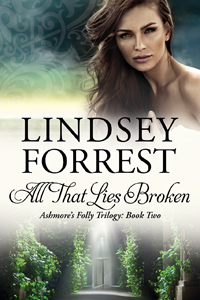Psyching the Players
Richard Ashmore * Laura St. Bride * Lucy Maitland
Cameron St. Bride * Mark St. Bride * Diana Ashmore
Meg St. Bride * Francie Abbott * Julie Ashmore
I’ve been interested in the Myers-Briggs personality type assessment for over ten years. I first became interested when I read a profile on Slate about the presidential candidates of 2000 and their respective personality types. I then took the MBTI and scored out as an INFP (Introvert Intuitive Feeling Probing).
After my husband also took the assessment, testing out as an INTJ (Introvert Intuitive Thinking Judging), we decided to learn what we could about the personality types and the effect our different types had on our marriage. We started with David Keirsey’s wonderful Please Understand Me II: Temperament, Character, Intelligence and progressed to specific works about the effect of personality on work, relationships, and spirituality. We both really liked Keirsey’s labels (Idealist/Healer in my case, Rational/Mastermind in his); the labels made the various letter combinations easier to remember and differentiate.
So, of course, I “gave” my characters the Temperament Sorter (modified MBTI) that Keirsey has in his book. It was a lot of fun and gave me greater insight into each character; I had to think like Laura, or Richard, or Diana, or Lucy, so that the test could accurately reflect their type.
So here are the results.
Richard Ashmore
Appropriately enough, Richard tested out as an INTP (Rational/Architect)! Quiet, highly intelligent, and prone to keep his own counsel, Richard lives mostly in his mind. He is a voracious reader, with interests in solitary pursuits such as flying and astronomy. Although he was sought after to play basketball in school due to his height, he decided to go out for track instead, and he still runs to burn off energy.
As a rational, skeptical empiricist, he flirted with Randian philosophy and swore off religion in his early teens. Rationals (the NTs) are the most likely to embrace agnosticism, and one of the books we read said that it usually takes a great crisis to bring them to their knees in prayer. As we see, Richard experiences just such a crisis of character and confidence.
The P in the Architect’s type means that Richard is most likely to leave his options open — which may explain his reluctance to formally end a marriage that has been dead for years.
Laura St. Bride
Laura tested out as an INFJ (Idealist/Counselor). She is quiet and lives mainly in her head, as many introverts do, and she keeps her thoughts and ideas to herself. One of the things that baffled everyone when she ran away at 17 is that she had obviously planned it for a long time, but she had managed to keep her plans well-hidden.
She has a rich inner life, expressed through her music and her writing. She is highly poetic (the songwriting), and she sees emotions in larger-than-life terms. While many look at the Ashmores’ marriage and think that it was just two incompatible kids driven by their hormones, she sees the tragedy of broken dreams.
Because Laura, as an Idealist/Counselor, values others’ feelings and tends to sublimate her own welfare to that of others, she presents to the world as a fragile flower, easily pushed around and taken advantage of. She is indeed capable of great sacrifice, but she is no pushover, as Cam St. Bride, Meg St. Bride, Lucy Maitland, and Richard Ashmore come to appreciate, and as Mark St. Bride learns to his detriment. Once she determines the right course for those around her, she will forge ahead to protect them, despite the cost to herself.
Richard Ashmore sums her up best at the end of the story: She is steel and diamond, tempered and forged in the worst of crucibles. She has passed through fire. She can and will survive anything life throws at her.
Lucy Maitland
Lucy is one of the easiest personality types to identify, because her type is plentiful. While Richard and Laura belong to rare types, each comprising less than 2-3% of the population, Lucy belongs to a type that is over 10%. She is an ESFJ (Guardian/Provider), or, as her foster brother describes her, “Miss Infernal Busybody” who keeps trying to run his life.
We all know a Lucy — friendly, outgoing, caring, and more than happy to tell you what she thinks you should be doing. Lucy is the one who fights to keep the family together, who adores her foster brother and best friend even though she wants to brain him most of the time. Lucy is the one who tries hard to keep her wayward sister Diana from going completely off the rails. Lucy is the one who senses danger when Laura comes back, because now Laura and Richard are ready for each other and Lucy knows that will split the family apart. Lucy is the one who rises to the defense of her loved ones when one of them is threatened.
Lucy is also pragmatic, far more tethered to the real world than either of her sisters. She is a member of her community — the Queen Bees (you meet them in Book Two), the legal community, her church. Lucy is the one who organizes the benefit concert, who keeps sponsors in line, who deals with reporters.
Like many ESFJs, Lucy is the core of her family, and her family means everything to her. While she always prefers to negotiate, she will not hesitate to do battle to defend those she loves.
Cameron St. Bride
At one point, Laura realizes that her two men, who would have beaten each other to a pulp if they had ever met, are far more alike than she had ever dreamed. While Richard is an INTP, Cam tests out as an INTJ (Rational/Mastermind), and he fits the temperament pattern perfectly. Like Richard, he is a rational thinker who tends to make decisions based on facts and ideas, not on feelings (head over heart). He is a leader — CEO of an organization that he builds from the ground up. He is also the leader of his family; his siblings really flounder when they can no longer follow him. His leadership, however, is subtle, so subtle that it takes many months for his successor to recognize the true loss.
Cam is essentially a programmer, dealing in numbers. He plays chess, teaches his daughter to strategize her life, disregards rules when he sees no rationale for their existence, and engages in philandering with an eye to the cost-benefit ratio. When the cost finally outweighs the benefit, he coolly and decisively cuts the woman loose.
Cam even falls in love rationally, weighing the pros and cons, as evidenced in his letter to Mark: She needed our marriage because she needed money. I knew, and I didn’t care. I knew, the night I met her, that she was the finest woman I would ever meet, and I was willing to take her any way I could get her. I’ve never changed my mind. I’d do it again.
More than any other character, Cam St. Bride is an enigma. Even the wife who lives with him for twelve years does not truly know him.
Mark St. Bride
Like his nemesis Lucy, Mark St. Bride is very easy to identify. He is an ISTJ (Guardian/Inspector) who believes in Doing Things the Right Way and Following the Rules. He follows a laid-out life plan which is thrown into disarray by events completely outside his control.
He is very judgmental — of his parents, his brother, his sister, and his sister-in-law. He despises his brother’s morals even as he envies him for his success in business and in personal life. He scorns his sister’s temper tantrums and marital history. His most complex feelings come into play for his brother’s wife, a woman he cannot defeat, even as he attempts to bend her to The Way Things Should Be Done.
Mark admits that he does not have vision or imagination; he is most comfortable with his spreadsheets. Being forced into a role for which he is not temperamentally suited brings out the worst in him (in psych terms, he is “in the grip”). His failure to bend, to see another’s point of view, is his greatest failing.
Diana Ashmore
Diana tested as an Artisan/Composer (ISFP). There is no doubt that Diana is talented — that is confirmed over and over by all the people around her — but Diana shows the temperament of the Composer through her impulsiveness and lack of planning. Many times in her life, Diana acts without thought for the consequences; she lies to get herself out of trouble, often digging herself in even deeper.
Diana tends to live in the here and now, and she does very little planning for the future. This leaves her drifting, and as the story unfolds, we see that Diana really has little purpose in life other than needling Richard. When faced with a situation that involves the future — building a marriage, having a baby — she tries to escape.
Her dream is to live in Paris, play jazz at clubs, drink lots of bad cheap wine, and have meaningless flings with bad boys. So who does she marry? The Architect who, as she said, mapped out his future in his cradle. While Richard’s careful planning could have stabilized her, Diana instead fights against it, resisting any threat to her freedom. In the process, she derails her adulthood.
One beta reader remarked that Diana is, in essence, a tragic figure. But she is tragic because she has chosen to be. More than any other character in the Ashmore universe, Diana personifies the observation of C.S. Lewis that “the door to hell is locked from the inside.”
Meg St. Bride
Like her mother, Meg is an Idealist, but she is an extrovert to Laura’s introvert, testing out as an Idealist/Champion (ENFP). While at first glance she appears to be much like Lucy, in fact Meg is far more intuitive than her aunt. She is an outgoing, friendly personality, confident and sure in herself and curious about others. She is energetic and exuberant — too much so, as Richard Ashmore thinks when he meets her — but she also has a sense of fairness, and she is fiercely protective of her own.
Meg makes things happen.
Francie Abbott
Francie Abbott, like her older sister Diana, is an Artisan, but her extroversion makes her an Artisan/Performer (ESFP). As Lucy thinks at one point, Francie seems constantly to be begging for attention — acting out, flirting, performing. Francie laughs and jokes, sometimes in fun, sometimes maliciously, but always warm and funny. More than one character thinks of her as a world-class liar — while Diana lies to get out of a jam, Francie lies because it is entertaining. She likes to tell stories (“I told her she had a great future as a writer of erotica”), but her lies actually have a point to them. Where Diana drifts, Francie has a purpose.
Julie Ashmore
Of all my characters, including some of the minor characters you meet in the second and third books, Julie alone defies analysis. I know that she is, by far, the most difficult character to write. People who suffer a great deal of trauma or damage often can’t be captured by the MBTI — it’s known, for example, that sociopaths almost never test out correctly, because they are so damaged. Julie is no sociopath, but she is the child of a bitterly broken home, suffering from life-long insecurity. In essence, Julie Ashmore, the sheltered princess of Ashmore Park, is a damaged child.



